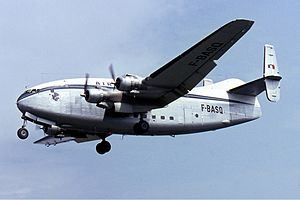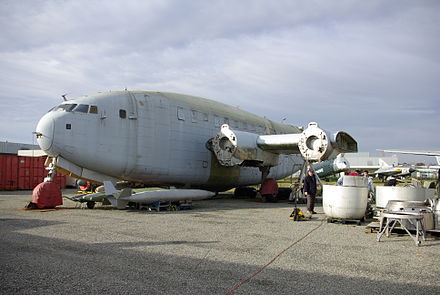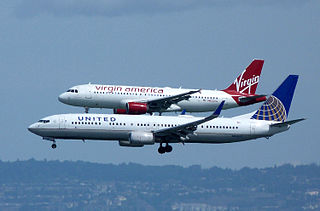
The Pratt & Whitney R-2800 Double Wasp is an American twin-row, 18-cylinder, air-cooled radial aircraft engine with a displacement of 2,800 in³ (46 L), and is part of the long-lived Wasp family.
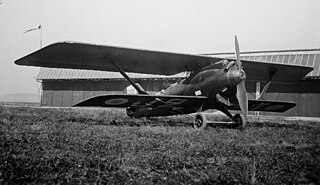
The Breguet 19 was a light bomber and reconnaissance aircraft, also used for long-distance flights, designed by the French Breguet company and produced from 1924.
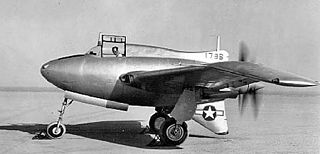
The Northrop XP-56 Black Bullet was a unique prototype fighter interceptor built by the Northrop Corporation. It was one of the most radical of the experimental aircraft built during World War II. Ultimately, it was unsuccessful and did not enter production.
The Kaiser-Fleetwings A-39 was a project by Kaiser-Fleetwings in the 1942–1943 period for an attack aircraft powered by a single Pratt & Whitney R-2800 radial engine. It was to be armed with four .50 caliber machine guns and two 37 mm cannons, along with up to 3,000 pounds (1,400 kg) of bombs. The A-39 was canceled before any prototypes were built.

The Lockheed Altair was a single-engined sport aircraft of the 1930s. It was a development of the Lockheed Sirius with a retractable undercarriage, and was the first Lockheed aircraft and one of the first aircraft designs with a fully retractable undercarriage.
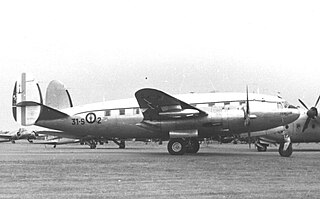
The Sud-Ouest S.O.30 Bretagne was a 1940s French airliner built by Sud-Ouest.
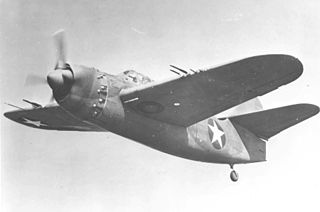
The Brewster XA-32 was an American attack aircraft, a mid-wing type with an internal bomb bay. The prototype had the R-2800 engine, but it could take the intended R-4360 powerplant. After a dismal set of test results, the XA-32 did not enter production.

The Breguet Br.521 Bizerte was a long-range military reconnaissance flying boat built by the French aviation company Breguet.

The Breguet 941 was a French four-engine turboprop STOL transport aircraft developed by Breguet in the 1960s. Although widely evaluated, it was not built in large numbers, with only one prototype and four production aircraft being built.

The Buhl AirSedan was a civil utility aircraft manufactured in the United States that holds the first transcontinental non-stop roundtrip flight record in 1929 with the Buhl AirSedan "Spokane Sun-God".
The Latécoère 611 was a French four-engined maritime reconnaissance flying boat of the Second World War. Although only a single prototype was completed, this served throughout the war, being used by both the Vichy French and Free French navies.

The Breguet 27 was a 1930s French biplane military reconnaissance aircraft, built for the Armée de l'Air and for export to Venezuela and China.

The Breguet 730 was a French flying boat of the 1930s. Built to meet the requirements of the French Navy, it was ordered into production but no aircraft were delivered before France surrendered to Germany in June 1940. Four remaining incomplete airframes were completed after the end of World War II, serving with the French Navy until 1954.

The SNCAC NC.211 Cormoran was a large four-engined military transport aircraft for passengers and cargo designed and built by SNCAC from 1945.

The Breguet 470 Fulgur was a French airliner of the 1930s. Only a single example of the twin-engined monoplane was built, this being sold to the Spanish Republican government during the Spanish Civil War.
The Breguet 890 Mercure was a late 1940s French cargo and passenger transport aircraft designed by Breguet Aviation. Three variants were produced including a military variant called the Mars but none entered production.
The Breguet 482 was a French four-engined bomber aircraft of the 1940s. It was designed prior to the outbreak of the Second World War, two prototypes were nearing completion when Germany invaded France in 1940, with one being flown after the end of the war as an experimental platform.
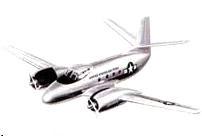
The Beechcraft XT-36 was an American twin-engine trainer-transport aircraft project of the early 1950s. Due to a change in requirements, the project was cancelled before any examples of the type were built.

The Breguet 460 Vultur was a French bomber of the 1930s. Few of these twin-engined monoplanes and its variant, the Breguet 462 Vultur, were built. At least one Breguet 460 was sold to the Spanish Republican Air Force during the Spanish Civil War.
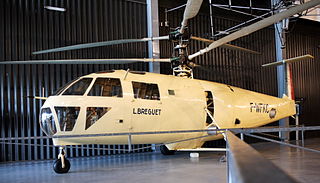
The Breguet G.11E was a French passenger coaxial rotors helicopter flown soon after World War II. Only one was built, development ceasing when funding ran out.
